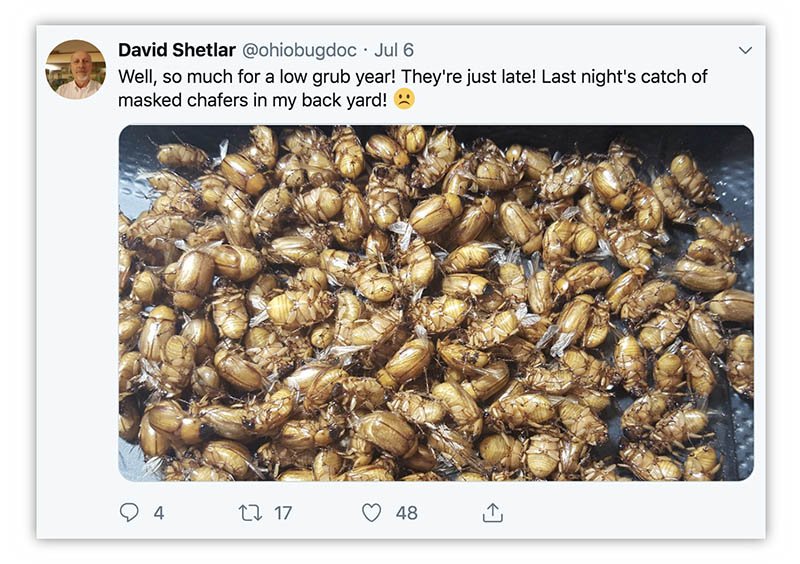University entomologists are great at spreading the word about the threat of insect pests like white grubs. Their back yards, however, might provide an even stronger tell about potential infestations.
When retired Ohio State entomologist Dave Shetlar, Ph.D., found hundreds of masked chafers in a backyard trap about a month ago, he suspected it might not necessarily be good news."Well, so much for a low grub year!" Shetlar tweeted along with the photograph.Grubs, the juvenile version of a variety of winged beetle species that number in the thousands worldwide, can be problematic in fine-cut turf where they feed on thatch, organic matter and root profile. Common grub species in turf include masked chafers, green June beetles and Japanese beetles.
The liberal sample of adult masked chafers in Shetlar's yard and excessive rains throughout much of the eastern part of the country could be signs of pending grub damage.
According to research, larvae overwinter in the soil, emerge as adults in early to mid-summer and lay their eggs just a few inches below the surface. Larvae hatch and feed on thatch, organic matter and roots in irrigated or otherwise wet turf before moving deeper into the soil in late autumn where they cease feeding then emerge as adults the following summer. They require moist conditions for eggs to hatch, so the adults are unlikely to lay their eggs in unirrigated turfgrass or areas that go dormant in summer.
Found in all 50 states, grubs typically are most problematic in cool-season turf environments and in the transition zone.
White grub damage typically is most evident in August and September. Symptoms of an infestation are gradual thinning, yellowing and weakening of the grass followed by scattered dead patches. As damage continues, the dead patches may increase in size, and apparently healthy turf areas may exhibit sudden wilting. The turf may feel spongy as you walk over the infested area.
Heavily damaged turf can peel away easily. If damaged areas do not pull back easily, the problem might be attributable to something else. Preventing grub damage might be as simple as learning the history of prior grub-related issues. Adult beetles are likely to return to lay eggs in areas where infestation has occurred in the past. Larger species, like the masked or European chafers, are larger and can do more damage than say the smaller Japanese beetle. Likewise, the European chafer has a longer life cycle, and can be feeding on roots earlier in the season and later into the summer.
According to studies, preventive applications of insecticides like neonicotinoids in late spring can help control first instar grubs in mid-summer. Many products labeled for curative control, while effective, typically have shorter residual activity.


